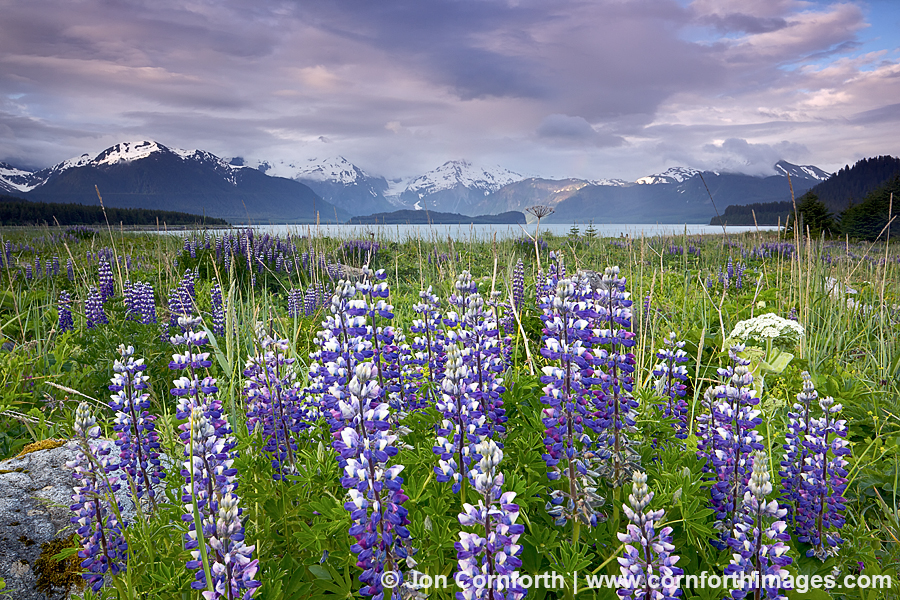
Lituya Bay Sunset 1
Posted onAfter trying to visit Lituya Bay the previous 2 summers, I was finally successful last week! My friend Dominik Modlinski joined me for a 12 day cruise that included the outer coast of Glacier Bay National Park. My boat Serenity is a 22′ C-Dory, which is a pretty small boat for cruising in the Gulf of Alaska. I needed a perfect weather forecast to insure our safety, and this time we got it. After departing Juneau and cruising to Elfin Cove, we began the 60 mile journey up to Lituya Bay in calm seas, but low visibility. We joked that we were cruising on a lake, rather than the North Pacific Ocean. The National Weather Service didn’t predict any big storms, so I knew that we were going to be able to safely run up and back within a week.
Lituya Bay is a spectacular location that few people visit. It has a long dark history that culminates with the July 9, 1958 mega-tsunami that yielded the largest recorded wave in history. The wave was initiated by an 8.3 magnitude earthquake which caused the mountainside at the head of Crillon Inlet to collapse into the bay. The resulting “splash” sent a wall of water up the opposite mountainside to a height of 1,720 feet. As the wave turned and continued, it destroyed every tree in it’s path up to 100 feet about the water before exiting the bay. Three fishing boats were anchored near La Chaussee Spit at the time, and only 1 boat and its crew survived.
The native Tlingit people were afraid of Lituya Bay. The pre-European Tlingits had a horror of death by drowning, which interrupts the soul’s cycle of cremation and rebirth, giving rise to baleful beings called Land Otter Men. Lituya Bay had many, and when angry they were known to shake the bay and flush it clean of living things. Russians of the Bering expedition found the bay in 1741, but lost 15 men there in the vicious seas. In 1786, the explorer La Pérouse also lost 21 of his men in the extreme tidal currents at the entrance to the bay. In 1853 or 1854, a great wave swept the bay and killed all of the native inhabitants. Other recorded waves came in 1899 and 1936, but by this time, no one lived in the bay any longer due to its fierce reputation.
With all this dark history on my mind, why then did I want to visit Lituya Bay you ask? I have always been an adventurer whether it was extreme alpine climbing or swimming in the deep blue with whales & sharks. I strive to visit places that are just a bit on the edge. I am bored otherwise. While in Lituya Bay, I definitely felt a bit uneasy by the history of the place. I always felt the presence of the bay’s tragedies in my mind like a guillotine ready to drop at any unsuspecting moment. However, the pure beauty of the place and the incredible amount of wildlife that I saw while visiting convinced me that it is a primeaval paradise. These lupine in bloom along La Chaussee Spit at sunset one night are a testament to life’s eternal cycle of death and rebirth. Lituya Bay for me was a dream realized. I do not know if I will ever be fortunate enough to go back, but I hope to some day.

Fantastic images and a great story! Sounds like this was an Alaska trip for the books. I’m jealous!
Thanks, Mark. It really was a great trip. It also helped that we barely got rained on the entire time. Much better than my previous 2 summers up there.
I first heard about the bay from Lynn Schooler. I read his book Walking Home.. a wonderful book, so explicit in detail on what the bay looked and sound liked.. but your photos add more to my adventureous soul.. hoping someday to get to Alaska . thank you